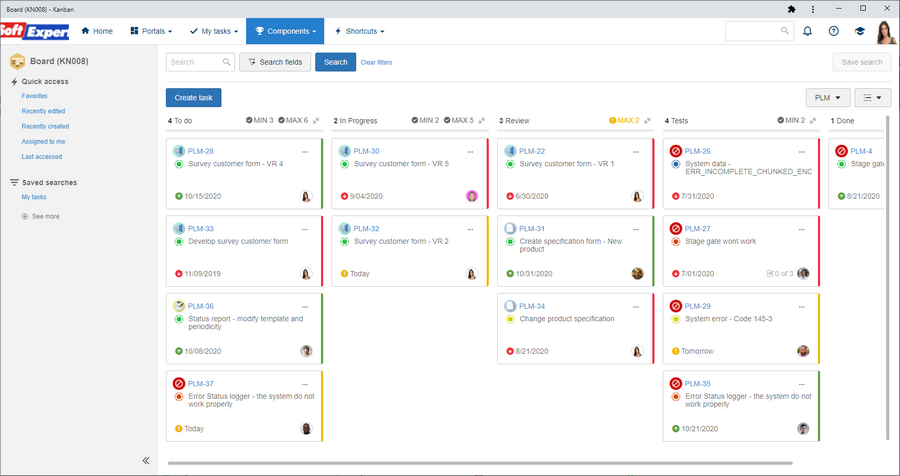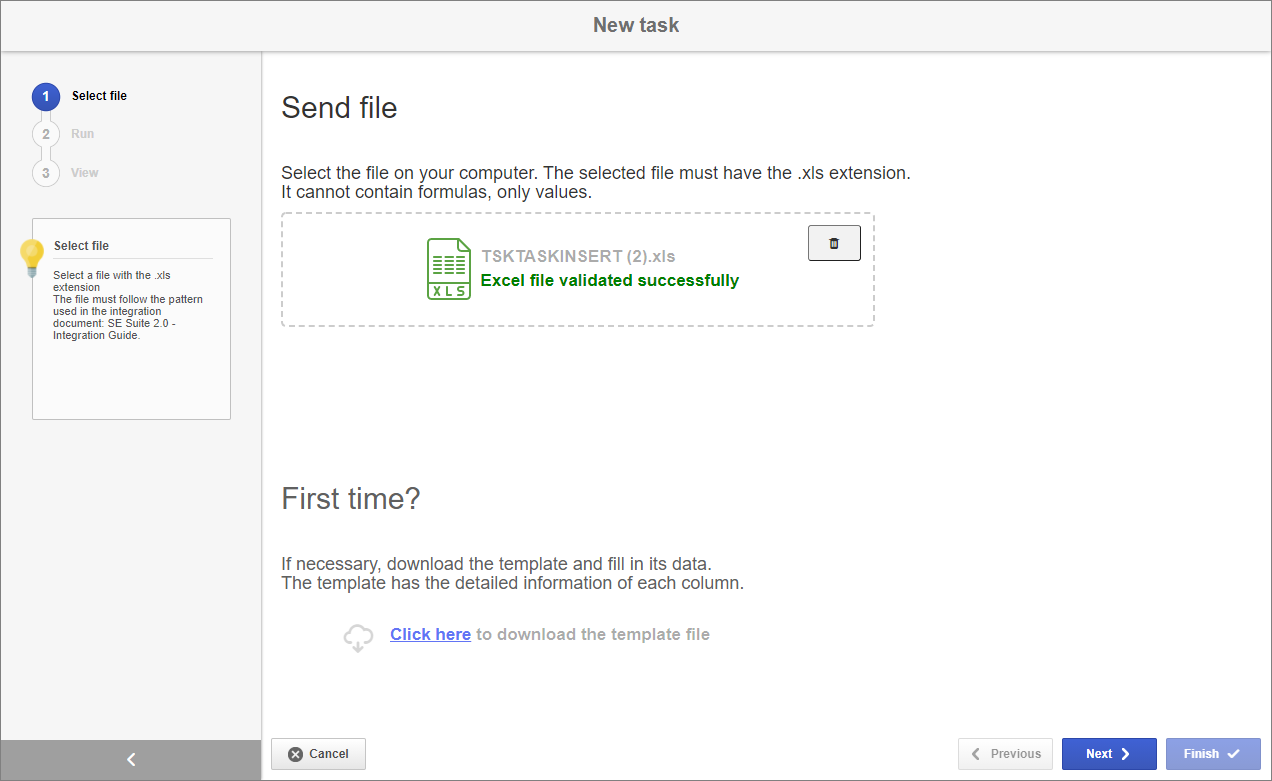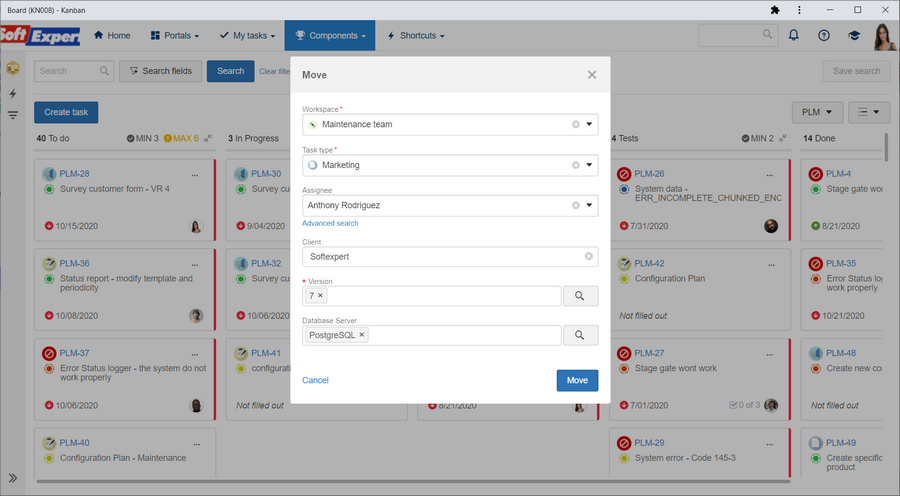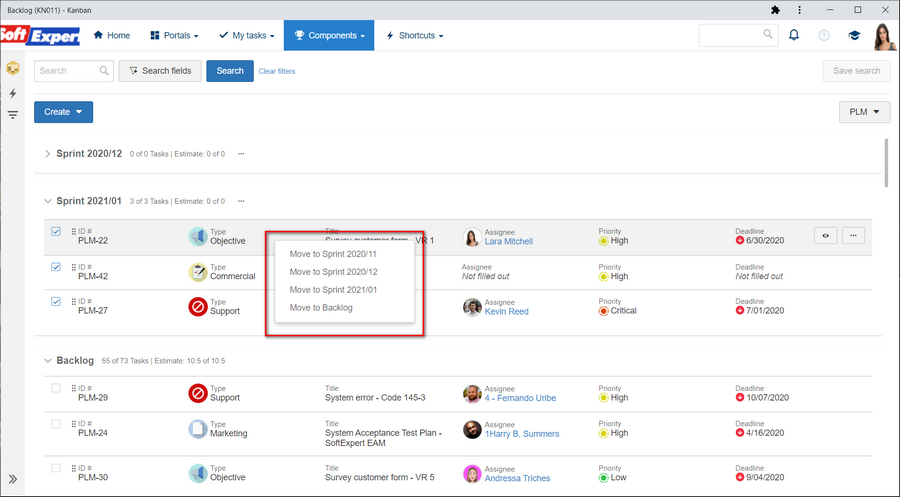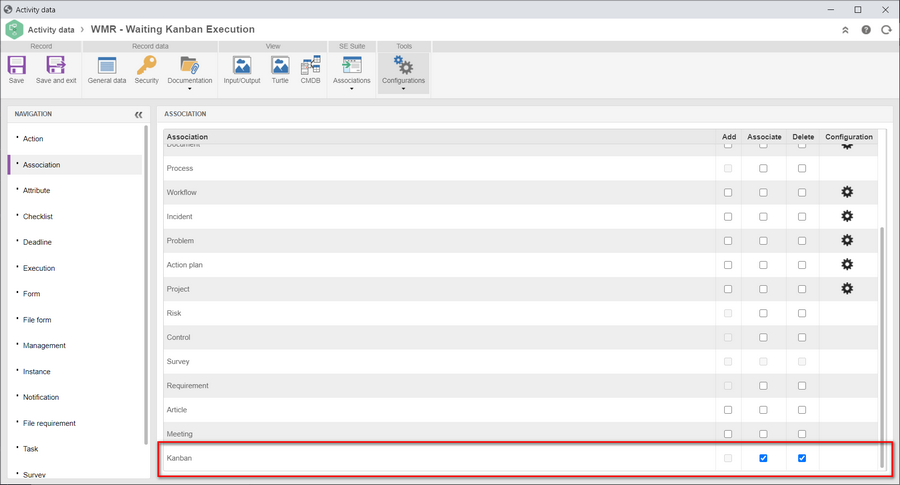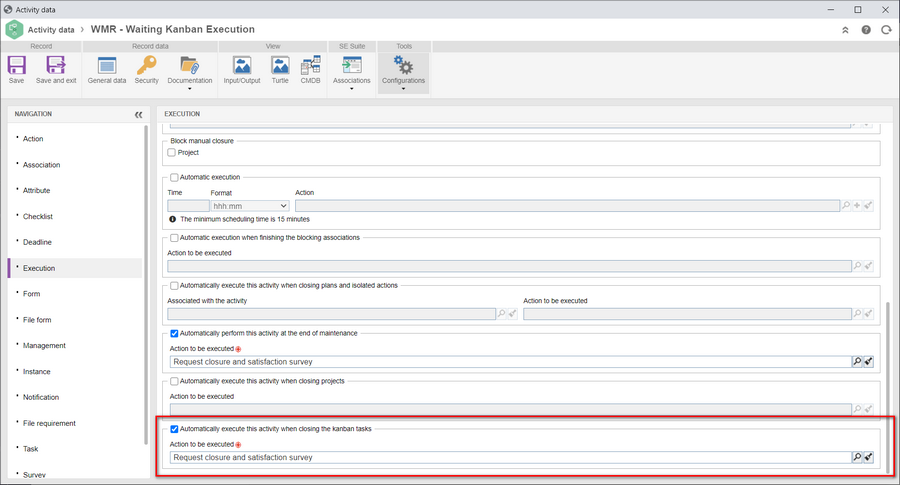
Adequacies in the task execution board
For this version, the Board structure has undergone adjustments to facilitate its usage. With the adequacies, the user can work with the sidebar, allowing the use of quick access and saved searches. In addition to that, with the changes, the system gains a standardization among the View, Backlog, and Board menus, facilitating its usage.
If desired, the sidebar can be collapsed, highlighting the Kanban vision.
Direct the user to the task from a notification
From this version onwards, by mentioning a user in a Kanban task, the user gets not only an alert in the notification center, but also a direct link to the task data. If the user has permission, the system will open the task on edit mode in the execution board or in the backlog; otherwise, they will be directed to task view.
Allow importing tasks from the Backlog
Aiming to vary task creation, the possibility to import tasks to the component has been made available in the backlog. With this feature, the user may create tasks in batches from an import structure using an XLS spreadsheet.
Allow moving tasks between Workspaces and Task types
Tasks are sometimes created with certain characteristics and, when executing it, the user realizes it should belong to another type or even another Workspace, under the responsibility of another team. With those scenarios in mind, from this version onwards, it will be possible to perform those events with the task, which can be converted to a new task type and remain in the same Workspace or moved to a new Workspace.
A security permission has also been added to the feature, to define which users have permission to move tasks. To move tasks to another Workspace, the user must have task creation permission in the destination Workspace.
Context menu for the Backlog
From this version onwards, the user will have the option to use the secondary click to move the tasks among the sprints. With this feature, users who have many tasks and sprints mapped will have a simpler backlog and process to move the tasks among the sprints. With the secondary click on the mouse (usually right-click), the system displays the listing of created sprints and the backlog; the user must simply select the desired record for the tasks to be moved, without the use of drag-n-drop.
Integration of tasks and process instance (Workflow, Incident and Problem)
For version 2.1.4 of the component, the integration between a Kanban task and an instance is no longer associative and gains a new relationship structure. Now, the user views the Kanban task association frame directly in the data of an instance. With this feature, the user can associate and even create a Kanban task through the instance data. In addition to that, when there is an association, the user can configure the process so that an instance activity is automatically executed when the Kanban task is finished.
New process configurations:
Define in which instance activity the user will be able to perform the association (add new task, associate and disassociate) a Kanban task.
Define the task that may be executed automatically when the Kanban task linked to the instance is finished.
Instance data
Instance data with Kanban task association respecting the Create, Associate, and Disassociate task permissions.
New associations for the component
For this version of the component, new associations with other Suite components have been released to be used in the Kanban task. Components that can now be associated: PDM, Asset, Supply, and Waste.
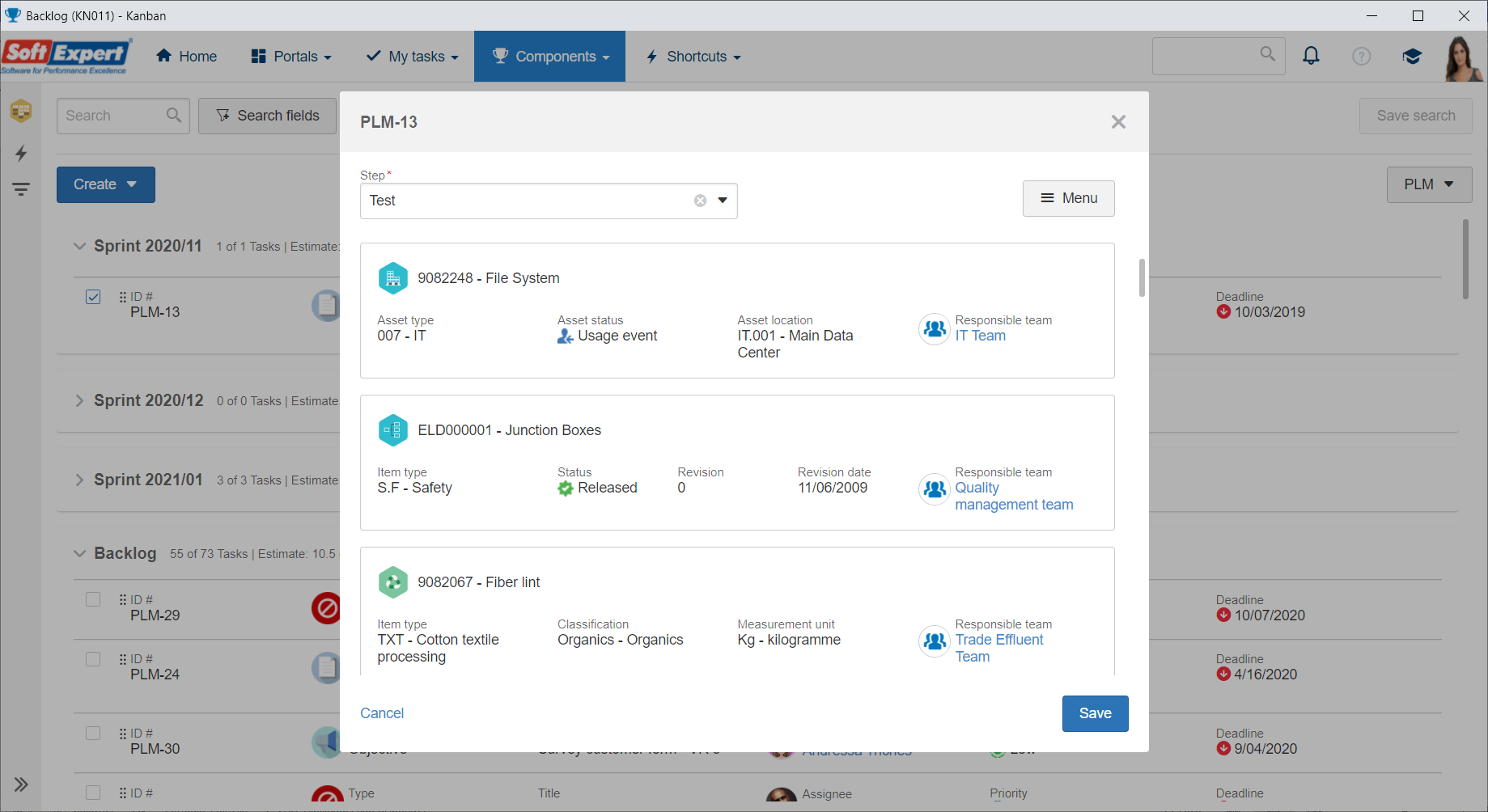
Previous versions
View also the improvements made to this component in previous versions:
